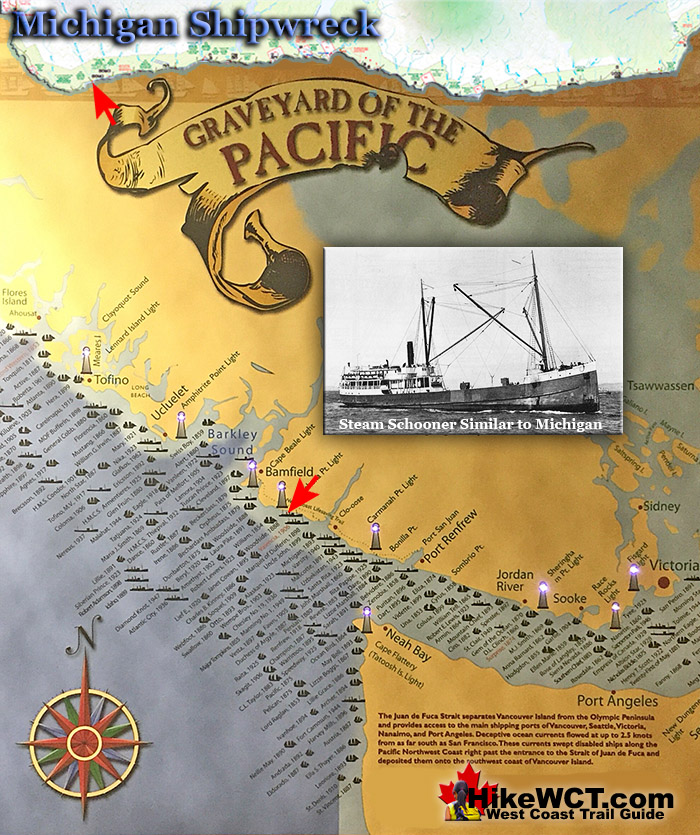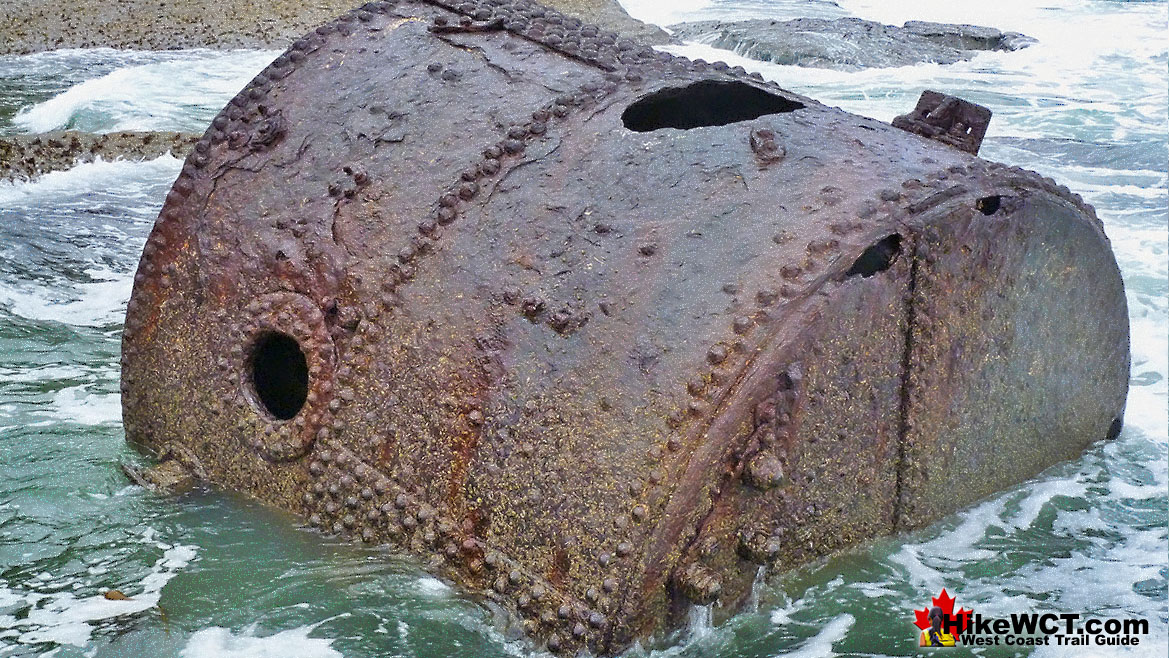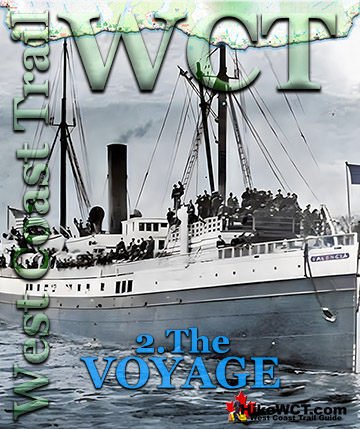![]() On the West Coast Trail at the 12 kilometre mark you will come to the Michigan. The Michigan shipwreck on the West Coast Trail is the first one you can see and actually touch, which is incredible since it is well over a century old. On January 21st, 1893 this 695 ton steam schooner was heading to Puget Sound from San Francisco.
On the West Coast Trail at the 12 kilometre mark you will come to the Michigan. The Michigan shipwreck on the West Coast Trail is the first one you can see and actually touch, which is incredible since it is well over a century old. On January 21st, 1893 this 695 ton steam schooner was heading to Puget Sound from San Francisco.
 Alaskan Shipwreck at 4km
Alaskan Shipwreck at 4km Soquel Shipwreck at 5km
Soquel Shipwreck at 5km Sarah Shipwreck at 7km
Sarah Shipwreck at 7km Becherdass-Ambiadass Shipwreck at 8km
Becherdass-Ambiadass Shipwreck at 8km Michigan Shipwreck at 12km
Michigan Shipwreck at 12km Uzbekistan Shipwreck at 13.8km
Uzbekistan Shipwreck at 13.8km Varsity Shipwreck at 17.6km
Varsity Shipwreck at 17.6km Valencia Shipwreck at 18.3km
Valencia Shipwreck at 18.3km Janet Cowan Shipwreck at 19km
Janet Cowan Shipwreck at 19km Robert Lewers Shipwreck at 20km
Robert Lewers Shipwreck at 20km Woodside Shipwreck at 20.2km
Woodside Shipwreck at 20.2km Uncle John Shipwreck at 26.2km
Uncle John Shipwreck at 26.2km Vesta Shipwreck at 29km
Vesta Shipwreck at 29km  Raita Shipwreck at 33km
Raita Shipwreck at 33km  Skagit Shipwreck at 34.2km
Skagit Shipwreck at 34.2km Santa Rita Shipwreck at 37km
Santa Rita Shipwreck at 37km Dare Shipwreck at 39km
Dare Shipwreck at 39km Lizzie Marshall Shipwreck at 47km
Lizzie Marshall Shipwreck at 47km Puritan Shipwreck at 48.5km
Puritan Shipwreck at 48.5km Wempe Brothers Shipwreck at 49.4km
Wempe Brothers Shipwreck at 49.4km Duchess of Argyle Shipwreck at 58km
Duchess of Argyle Shipwreck at 58km John Marshall Shipwreck at 62.3km
John Marshall Shipwreck at 62.3km William Tell Shipwreck at 64.2km
William Tell Shipwreck at 64.2km Revere Shipwreck at 69km
Revere Shipwreck at 69km Cyrus Shipwreck at 75km
Cyrus Shipwreck at 75km
The strong northerly current that prevails in this part of the Pacific and would eventually cause dozens of shipwrecks, caused the Michigan to massively overrun her position. Instead of sailing into Juan de Fuca Strait, she collided with Vancouver Island in the middle of the night. The 25 people on board managed to get ashore after daylight. The seas calmed the crew was able to retrieve a boat from the wreck and was able to get to Neah Bay for assistance. A ship rescue was attempted, but was not successful. One death resulted from the attempt to hike over the old telegraph trail to Carmanah Point. A testament to how difficult it was then as compared to how relatively easy the now relatively easy West Coast Trail.
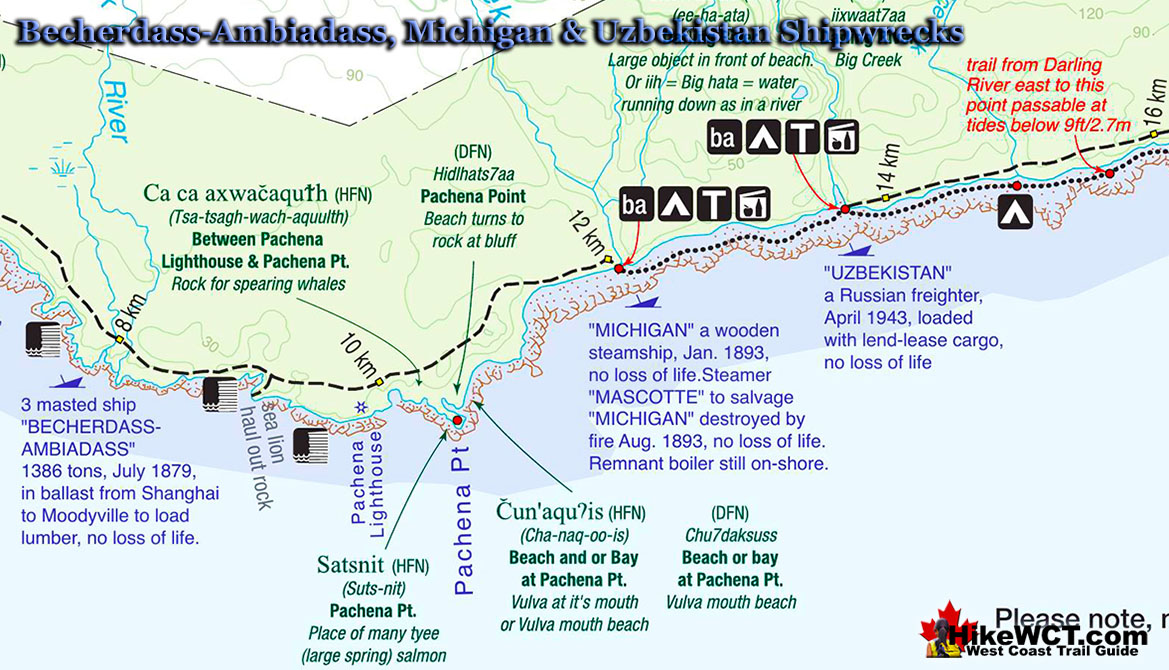
More Shipwrecks Near the Michigan (KM12)
The Sarah Shipwreck Near KM7
![]() The captain of the Sarah sighted the recently built Carmanah Point Lighthouse and mistook it for the Cape Flattery Lighthouse. The Sarah struggled against the south-east wind and the ship was pushed westward. Later the crew was able to regain their eastward coarse, toward what they though was Juan de Fuca Strait. The ocean current had moved the ship considerably far north and on the evening of the 8th November, 1891, the crew was surprised to suddenly hear distant breakers. They immediately dropped anchor, then shortly after another one. But it was too late, the Sarah ran aground on the shore of what is now KM7 of the West Coast Trail. One lifeboat was freed with some of the crew, however the captain, the rest of his crew and his wife and baby remained because the second lifeboat could not be freed. Throughout the following day and night they struggled to free the boat to make their escape to safety. Two of the crew drowned in attempting to reach the shore in a makeshift raft. Finally they managed to free another lifeboat and the survivors managed to get ashore. They were rescued by one of the many indigenous tribes residing on Vancouver Island. It seems safe to assume that it was the Huu-ay-aht First Nations which resided there, as they do now, at Pachena Bay. The Huu-ay-aht brought the shipwreck survivors to a trader's post where they found passage to Victoria on a local schooner. 16 of the crew of 18 and the captain's wife and baby survived the Sarah shipwreck.
The captain of the Sarah sighted the recently built Carmanah Point Lighthouse and mistook it for the Cape Flattery Lighthouse. The Sarah struggled against the south-east wind and the ship was pushed westward. Later the crew was able to regain their eastward coarse, toward what they though was Juan de Fuca Strait. The ocean current had moved the ship considerably far north and on the evening of the 8th November, 1891, the crew was surprised to suddenly hear distant breakers. They immediately dropped anchor, then shortly after another one. But it was too late, the Sarah ran aground on the shore of what is now KM7 of the West Coast Trail. One lifeboat was freed with some of the crew, however the captain, the rest of his crew and his wife and baby remained because the second lifeboat could not be freed. Throughout the following day and night they struggled to free the boat to make their escape to safety. Two of the crew drowned in attempting to reach the shore in a makeshift raft. Finally they managed to free another lifeboat and the survivors managed to get ashore. They were rescued by one of the many indigenous tribes residing on Vancouver Island. It seems safe to assume that it was the Huu-ay-aht First Nations which resided there, as they do now, at Pachena Bay. The Huu-ay-aht brought the shipwreck survivors to a trader's post where they found passage to Victoria on a local schooner. 16 of the crew of 18 and the captain's wife and baby survived the Sarah shipwreck.
The Sarah shipwreck continued here...
The Becherdass-Ambiadass Shipwreck Near KM8
![]() Built in 1864 the 1376 ton, 3 masted ship, Becherdass-Ambiadass was wrecked on the rocky shore only a half mile from Pachena Point. This British ship was returning from Shanghai to Moodyville (now North Vancouver) when Cape Beale was sighted. As she neared Vancouver Island early morning fog blinded her and under full sail collided with the abruptly rocky shore near the 8km mark of the West Coast Trail on July 27th, 1879. Amazingly no one was seriously hurt, but the ship was wrecked. The crew used the lifeboats to save themselves. The next day a local boat carried both the crew and their belongings to Victoria. In the following weeks the ship disintegrated on the rocks. There are no remnants of wreckage from the Becherdass-Ambiadass shipwreck to see. The wreck sits under the waves not far from where the Black River meets the ocean near KM8 along the West Coast Trail.
Built in 1864 the 1376 ton, 3 masted ship, Becherdass-Ambiadass was wrecked on the rocky shore only a half mile from Pachena Point. This British ship was returning from Shanghai to Moodyville (now North Vancouver) when Cape Beale was sighted. As she neared Vancouver Island early morning fog blinded her and under full sail collided with the abruptly rocky shore near the 8km mark of the West Coast Trail on July 27th, 1879. Amazingly no one was seriously hurt, but the ship was wrecked. The crew used the lifeboats to save themselves. The next day a local boat carried both the crew and their belongings to Victoria. In the following weeks the ship disintegrated on the rocks. There are no remnants of wreckage from the Becherdass-Ambiadass shipwreck to see. The wreck sits under the waves not far from where the Black River meets the ocean near KM8 along the West Coast Trail.
The Becherdass-Ambiadass shipwreck continued here...
The Uzbekistan Shipwreck Near KM14
![]() The Uzbekistan was a steel steamship of 2569 tons. Built in 1937 in France and became a shipwreck on April 1st, 1943. A Russian ship, the Uzbekistan was part of the lend-lease program during World War II, where the US shipped war materials to Russia. She left Portland for Seattle to pick up a load of war materials destined for Vladivostok. On April 1st 1943 the Uzbekistan encountered stormy weather and bad visibility, mistaking the light at Swiftsure Bank for that of Umatilla Reef. She steered toward what was thought to be Juan de Fuca Strait. Because of the strong northerly current, she was far north of her supposed location. At 11pm the Uzbekistan collided with the rocky shelf just down from today's Darling River. The entire crew made it to shore safely and made camp. They then managed to hike their way to Bamfield and were eventually picked up by a Royal Canadian Navy ship. Today, if you are lucky you can spot the Uzbekistan's boilers and parts of her propulsion machinery at very low tide at the edge of the reef. You will more easily spot pieces of steel scattered around the mouth of Darling River.
The Uzbekistan was a steel steamship of 2569 tons. Built in 1937 in France and became a shipwreck on April 1st, 1943. A Russian ship, the Uzbekistan was part of the lend-lease program during World War II, where the US shipped war materials to Russia. She left Portland for Seattle to pick up a load of war materials destined for Vladivostok. On April 1st 1943 the Uzbekistan encountered stormy weather and bad visibility, mistaking the light at Swiftsure Bank for that of Umatilla Reef. She steered toward what was thought to be Juan de Fuca Strait. Because of the strong northerly current, she was far north of her supposed location. At 11pm the Uzbekistan collided with the rocky shelf just down from today's Darling River. The entire crew made it to shore safely and made camp. They then managed to hike their way to Bamfield and were eventually picked up by a Royal Canadian Navy ship. Today, if you are lucky you can spot the Uzbekistan's boilers and parts of her propulsion machinery at very low tide at the edge of the reef. You will more easily spot pieces of steel scattered around the mouth of Darling River.
The Uzbekistan shipwreck continued here...
The Varsity Shipwreck Near KM17.6
![]() Just 4 kilometres past the Uzbekistan shipwreck you will pass by the final resting place of the Varsity. The Varsity was a small fishing boat of 90 tons, returning to Puget Sound from California on February 5th, 1940. In bad weather and stormy seas, she abruptly struck the shore, just a kilometre past, what is today, Tsocowis Creek on the West Coast Trail. The Varsity had overrun her position due to the fast northerly current. The crew were so hopelessly lost that they believed their position to still be in American waters, instead of way up on the coast of Vancouver Island. Unfortunately, their distress call gave their position as several kilometres south of their actual position. Of the crew of seven, three survived by crawling their way to the shelf below what is now called Valencia Bluffs. They now found themselves on a steep shelf that they could not climb. Out of the wreckage they managed to survive exposure and construct a ladder up the cliff and found the trail that hikers now call the West Coast Trail. The three survivors made their way to Tsocowis Creek and found the Tsocowis cabin occupied by lineman who fortunately was there. The three were later picked up from Tsocowis Beach. Today the shipwreck's huge metal winch rusts in a crevice at the foot of Valencia Bluffs.
Just 4 kilometres past the Uzbekistan shipwreck you will pass by the final resting place of the Varsity. The Varsity was a small fishing boat of 90 tons, returning to Puget Sound from California on February 5th, 1940. In bad weather and stormy seas, she abruptly struck the shore, just a kilometre past, what is today, Tsocowis Creek on the West Coast Trail. The Varsity had overrun her position due to the fast northerly current. The crew were so hopelessly lost that they believed their position to still be in American waters, instead of way up on the coast of Vancouver Island. Unfortunately, their distress call gave their position as several kilometres south of their actual position. Of the crew of seven, three survived by crawling their way to the shelf below what is now called Valencia Bluffs. They now found themselves on a steep shelf that they could not climb. Out of the wreckage they managed to survive exposure and construct a ladder up the cliff and found the trail that hikers now call the West Coast Trail. The three survivors made their way to Tsocowis Creek and found the Tsocowis cabin occupied by lineman who fortunately was there. The three were later picked up from Tsocowis Beach. Today the shipwreck's huge metal winch rusts in a crevice at the foot of Valencia Bluffs.
Varsity shipwreck continued here...
The Valencia Shipwreck Near KM18
![]() The Valencia is usually regarded as the worst shipwreck disaster in the Graveyard of the Pacific and the final impetus for the creation of the West Coast Trail. The SS Valencia was an iron-hulled, 1600 ton passenger steamer built in 1882. Originally built for service between Venezuela and New York City, she later became a coastal passenger liner on the west coast of the United States. In 1906 she was wrecked off Cape Beale, near Clo-oose, on the west coast of Vancouver Island. The captain did not take into account the strong northerly current that caused ships to overrun Juan de Fuca Strait by a considerable distance. Blinded by the weather and battered with strong winds and currents, the captain turned the Valencia toward the coast for its run into the strait. Just before midnight on the 22nd of January, she collided with the reef near Pachena Point on the southwest coast of Vancouver Island. The high number of fatalities are estimated to have been between about 140. Varying sources and speculation has resulted in a fair bit of uncertainty on those figures. According to the government report at the time, the official deaths numbered 136. Only 38 men survived the shipwreck and all the woman and children perished. The Canadian government rapidly began work on what would result in the West Coast Trail. A lighthouse was constructed and regularly spaced shelters along the newly constructed trail. The Valencia shipwreck disaster happened in 1906, the Pachena Point Lighthouse was finished in 1908, and in 1911 the West Coast Trail was completed.
The Valencia is usually regarded as the worst shipwreck disaster in the Graveyard of the Pacific and the final impetus for the creation of the West Coast Trail. The SS Valencia was an iron-hulled, 1600 ton passenger steamer built in 1882. Originally built for service between Venezuela and New York City, she later became a coastal passenger liner on the west coast of the United States. In 1906 she was wrecked off Cape Beale, near Clo-oose, on the west coast of Vancouver Island. The captain did not take into account the strong northerly current that caused ships to overrun Juan de Fuca Strait by a considerable distance. Blinded by the weather and battered with strong winds and currents, the captain turned the Valencia toward the coast for its run into the strait. Just before midnight on the 22nd of January, she collided with the reef near Pachena Point on the southwest coast of Vancouver Island. The high number of fatalities are estimated to have been between about 140. Varying sources and speculation has resulted in a fair bit of uncertainty on those figures. According to the government report at the time, the official deaths numbered 136. Only 38 men survived the shipwreck and all the woman and children perished. The Canadian government rapidly began work on what would result in the West Coast Trail. A lighthouse was constructed and regularly spaced shelters along the newly constructed trail. The Valencia shipwreck disaster happened in 1906, the Pachena Point Lighthouse was finished in 1908, and in 1911 the West Coast Trail was completed.
Valencia shipwreck continued here...
West Coast Trail A to Z
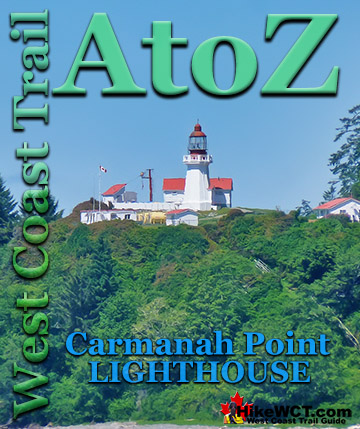
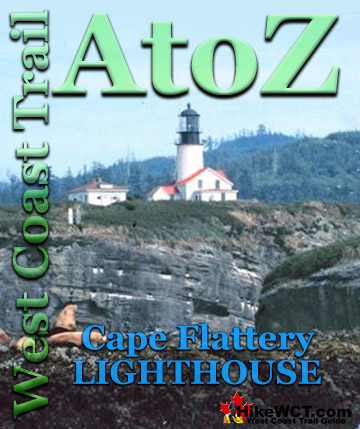
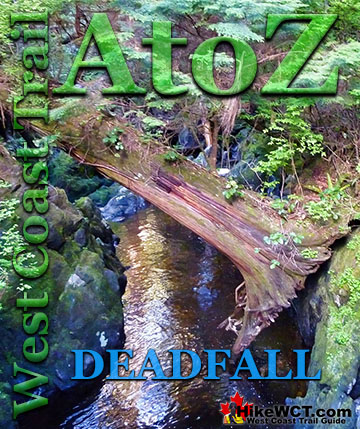
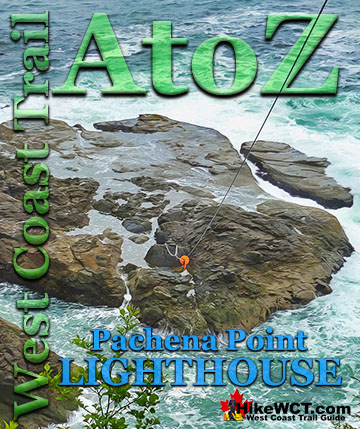
The Valencia Disaster
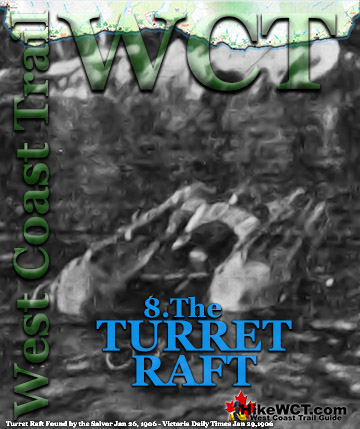
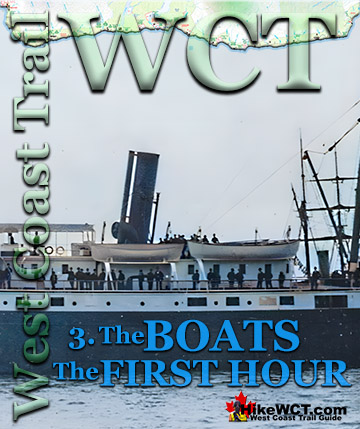
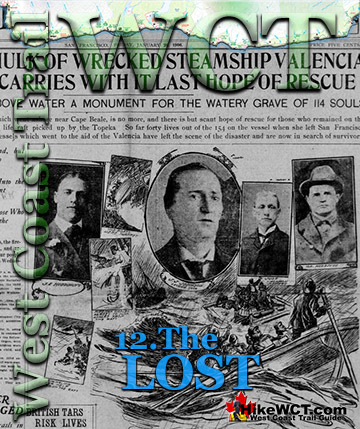
West Coast Trail Guide

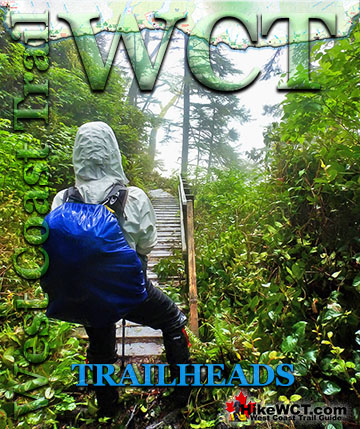
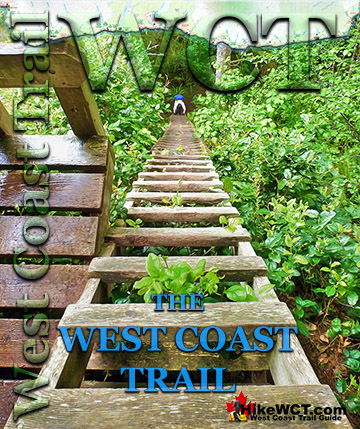

Explore BC Hiking Destinations!

The West Coast Trail

Victoria Hiking Trails

Clayoquot Hiking Trails

Whistler Hiking Trails
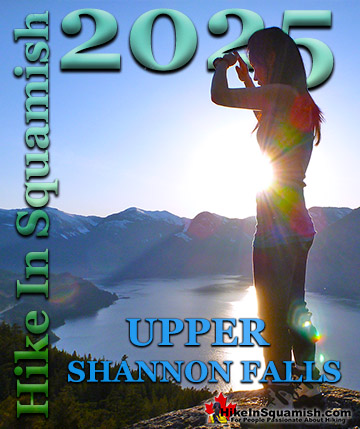
Squamish Hiking Trails

Vancouver Hiking Trails

